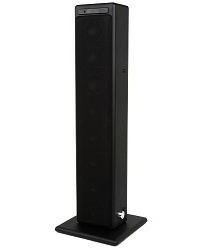Ed Funding | Feature
Grant Spotlight: 2 Ways To Get Free Tech
Ohio's Bloom-Carroll Local School District is shoring up its classrooms through two technology grant programs open to all schools--one a corporate program providing free classroom amplification systems, the other a program that distributes used computers to schools from government and military sources.
- By Bridget McCrea
- 11/30/11
Andy Doss is the first to admit that his school district hasn't had much luck securing financial grants to fund its technology needs. "A lot of grants are based on the number of free and reduced lunches in the district and poverty ratios," said Doss, IT coordinator and network administrator for the Bloom-Carroll Local School District in Carroll, OH. "We fill out the grant applications, but in the end our district doesn't usually qualify."
When the opportunity to apply for a different type of grant came up, Doss decided to go for it. Through its "Be Heard School Grant" program, Calypso Systems has doled out more than $240,000 worth of classroom voice amplification equipment to schools since starting the initiative in 2009.
Revving the Old
With its newest building constructed in the 1960s, Bloom-Carroll Schools' classrooms lacked any kind of sound amplification capabilities and relied on an old, analog PA system. Compounding the issue was the fact that a new middle school was under construction and would be outfitted with state-of-the-art multimedia equipment.
"We didn't want students coming out of the middle school and having to go into an old high school building that lacked technology," said Doss, who identified sound amplification and wireless access as two of the main items on his "to do" list for the high school renovation.
Doss said he learned about the corporate grant from a Calypso sales representative, who also introduced him to the firm's all-in-one sound amplification solution. "I basically got on the mailing list," said Doss, "and wound up applying for the grant."

Calypso's SoundPost systems include wireless and pendant mics and offer two stereo inputs with auto mixing. |
The effort paid off for Bloom-Carroll Schools, which was awarded a grant to cover the cost of three $800 SoundPosts. The product is designed specifically for K-12 classrooms to distribute sound evenly throughout the space. Teachers can integrate iPods and PCs into the system via a standard audio jack, and the setup also includes built-in wireless projector controls.
Doss said teachers place the equipment in the back of their classrooms, then don microphones that will allow them to address the class and reach all students, regardless of where the pupils are located in the room.
"The kids will understand what's going on in the class without having to strain to hear," said Doss. "From the teacher's perspective, it's a pretty simple setup that will definitely make a difference in our high school classrooms."
The district, which has four facilities (including one for grades K-2, another for 3-5, a 6-8 middle school, and a high school), reported it's installing the equipment as soon as it arrives and getting the teachers trained on it right away. (The installation date was originally set for early-September, but was pushed back owing to flooding problems at another institution and a lack of stock at the manufacturer's warehouse owing to those weather issues.)
A 'Great Deal' on Used Computers
Bloom-Carroll Schools, which participates in the United States Army's computer system recycling program, Computers for Learning, is also looking forward to receiving a new batch of desktops (and a small number of laptops) in the near future.
"We get 200-300 free computers a year through the program," said Doss, whose district allocates the money saved for equipment like interactive whiteboards and other classroom technology.
"We've been running our used computer fleet for about nine years now, and we haven't bought any new machines in about four years," said Doss. "It's a pretty great deal."
Cutting IT Software Costs
Doss is moving onto other technology projects. He said he's looking into Microsoft's new Enrollment for Education Solutions (EES) subscription license program designed for K-12 schools. The program gives qualified academic customers an easier way to acquire the firm's software and services under a single subscription agreement.
"EES has made software acquisition very cheap for us," said Doss. "We have 850 computers on campus that use Microsoft software, and to upgrade all of them to Windows 7 would have cost at least $100,000, if not more."
The new program is based on the number of staff members (at a cost of about $20 to $30 each), of which Bloom-Carroll Schools has about 140. "We'll be able to cover all 850 machines on an annual basis, and at a much lower cost," said Doss, who noted that the district's Microsoft Office and Windows 7 subscriptions will cost about $6,000 per year. "If we were to buy the licenses outright, it would literally take us 10 years to pay off their cost."
About the Author
Bridget McCrea is a business and technology writer in Clearwater, FL. She can be reached at [email protected].